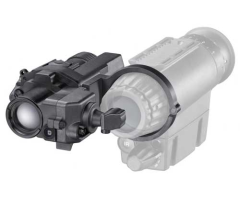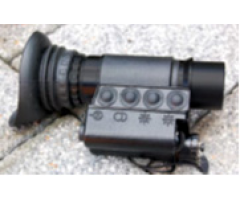Thermal Imaging Scopes
Thermal Imaging was initially utilised by the US Military in the Korean War as a surveillance tool. It’s use began to develop during the 1970’s when governments began to heavily invest in Thermal Imaging R&D to advance the capability of the technology & reduce the size with the intention to gain an advantage in the ‘theatre of war’. Subsequent years of development has produced an array of Thermal Imaging equipment available today, in size, capability & versatility.
Thermal Imaging measures infrared energy released or reflected by objects in the target area. The energy emitted depends on the temperature of the target. The infrared detector in the Thermal Imaging Scope converts infrared energy into an electrical signal. This is subsequently converted by the Thermal Imaging Scope into a visible temperature pattern referred to as a Thermogram. As different areas within the field of view emit different infrared energy, the Thermal Imaging Scope can create an image where ‘hot’, ‘cold’ and various states in-between are displayed.
Thermal Imaging Scopes vary from Night Vision Scopes in that where a Night Vision Scope utilises an Image Intensifier Tube to enhance the available ambient light, a Thermal Imaging Scope utilises a Thermal Detector that detects the ‘heat signature’ of the object.
The use of a Thermal Imaging Scope in covert surveillance has many benefits such as
- ability to operate in no-light conditions, detecting the target’s thermal signature (heat differential compared to surroundings)
- ability to operate in day-light conditions, detecting the target’s thermal signature (heat differential compared to surroundings)
- totally covert as no ancillary infrared illumination is required (known as ‘passive’)
- not effected by bright light
Thermal imaging detectors are available in a variety of configurations
- size (equals resolution)
- refresh rate (equals ‘lag’)
- wavelength bands - short (3 to 5 μm) and long (7 to 14 μm)
- pixel pitch (spacing between pixel centres)
- cooled or non-cooled
Thermal imaging scopes are available in a variety of configurations, typically size, detector size, wavelength & magnification, dependent upon the Germanium lens.
For more information on Thermal Imaging Scopes, please see below
Showing 1 — 3 of 3



